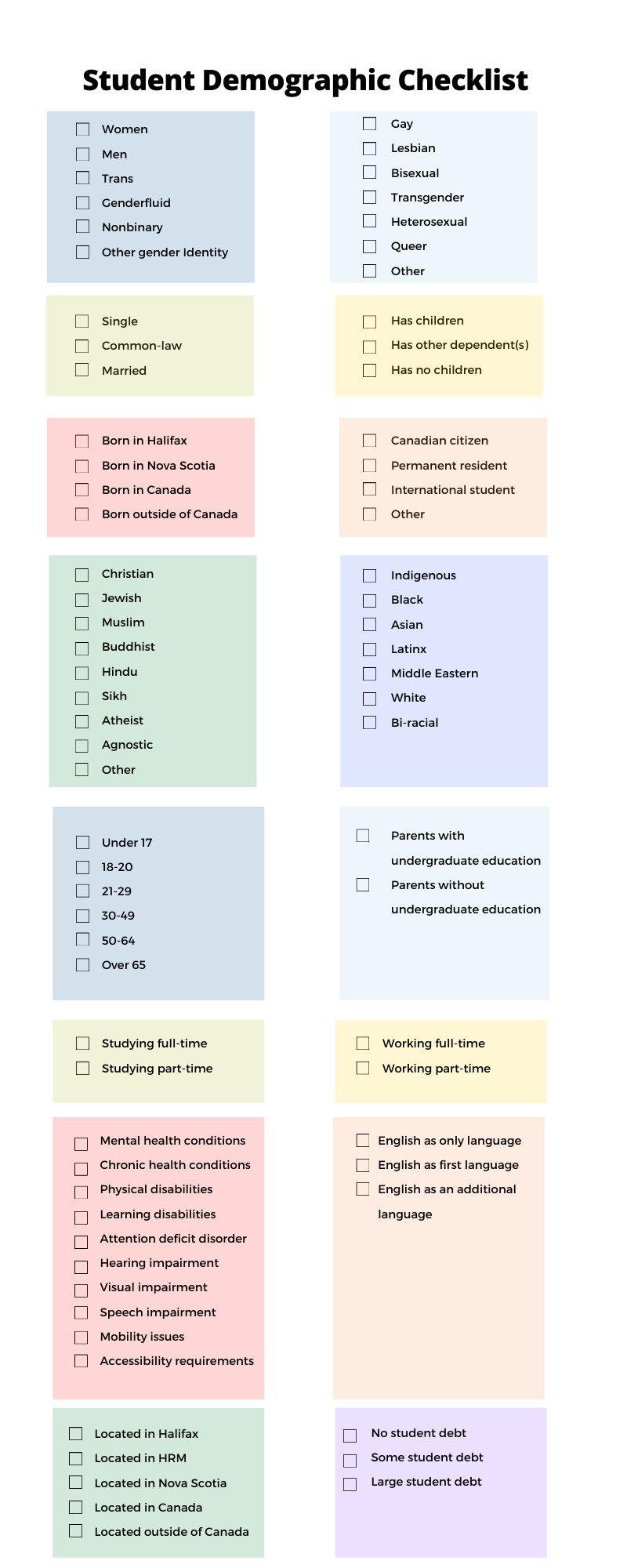1 Learners
Learner-centred teaching is grounded in learner-centred course development. If we develop a course with our students in mind, the outcomes are richer because the motivations, skills, and attributes we seek to foster are more clearly in mind. In order to put our learners first, let’s start by identifying some of the students who might enroll in your course.

We know that at the Mount, we see many students who are the first in their families to go to university. We have many international students enrolled in our courses, and often need to remember that English may be one of many languages in which they communicate. Often, our students rely heavily on student loans to pursue their education. As a result, they may choose to work part, or even full-time jobs while they go to school.
Many of our students, particularly in online classes, are mature students. Research also shows that women are more likely to enroll in online courses than men. In addition, our students may have a wide range of responsibilities outside of their coursework—family, job and social roles that may complement or conflict with their duties as students. We also know that many of our students face additional barriers to their education, including language, accessibility, and geography. At the same time, we see many students in our classes who are already operating at advanced levels and push to be challenged and take on more complex tasks to maximize their learning. All of these factors need to be considered at the course development stage.
To make the learners in our courses more real at this development stage, start by creating learner profiles. This process is a normal part of the design for online content creation, but it may be new to you.
Exercises
Start thinking about the students in your classroom.
- Download the fillable PDF Student Demographic Checklist.
- Add a check next to any demographic that may sometimes or always be present in your classroom
To start, review the list of demographic information below. Then continue on to the next section, Create a Learner Profile.

Some of these demographic indicators were compiled using the characteristics identified by McGill University when they produced their Student Demographic Survey in 2009. https://www.mcgill.ca/studentlifeandlearning/files/studentlifeandlearning/final_report_1.pdf

